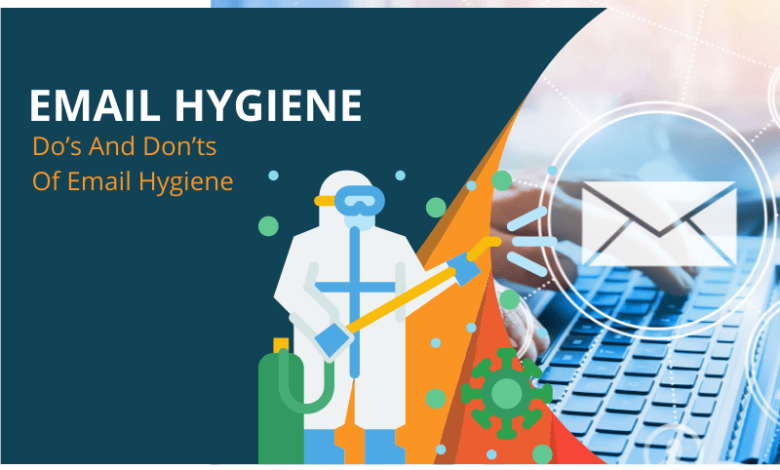Do’s And Don’ts Of Email Hygiene

Email hygiene is a two-way street, and you need to know the difference between the two while you’re cleaning your lists. Use these four quick steps to learn how to cleanse and verify the proper manner and avoid the most frequent mistakes:
1. Do
Before launching an email campaign, be sure you clean up your list. Maximize deliverability by using the most recent scans and certified emails before launching a campaign.
Don’t
Do not do any cleaning and then sit around and wait. Mailers mistake cleaning their lists and then storing the cleansed data for weeks or months before deploying it. This error is a typical blunder. Emails, like all data, are subject to change over time. There may be a time when something is clean, but it may not be clean in the future. There is a 1-3 percent attrition rate month over month for top-level domains like Hotmail, Yahoo!, Gmail, AOL, and other popular email providers. Investment in a cleaning that will be out of date in a matter of weeks does not make sense.
2. Do
Every 30 days, clean your Openers and Clickers. Clean and validated data may lead to a significant increase in open and click rates. It is an effective technique for all marketers to target their most engaged consumers by fragmenting opener and clicker data. This technique may seem like a good idea, but you must remember that “active” does not necessarily equal “clean.”
Don’t
Please do not rely on anything opening or clicking to imply that it is secure or free of malware. Deployment success is measured by the amount of active data, not by the integrity of your data. Available data might include some of the dirtiest information. Maintaining the quality of your list and mailing capabilities by regularly cleaning up your most active users will lead to continuous success.
Also Read:
How to Write & Send Perfect Cold Emails That Don’t Get Ignored
3. Do
Don’t forget to verify and sanitize your material for delivery and prestige risks. Getting rid of hard bounces and unfulfillable emails is only the beginning of the fight against spam. It’s also essential to get rid of spam traps, honey pots, monitoring seeds, and high-level whiners. Get a strategy that covers both ends so that you’re not left holding the bag. If it requires more than one cleaning solution, then so be it.
Don’t
Not all recipients are safe to receive emails, even if the emails have been tested and are more likely to arrive on time. An email might be fantastic, but delivering a detrimental email is not. Verifying data without cleaning it is a typical mistake made by emailers. The two are, by their very nature, opposed. To get rid of bounces and other delivery troubles, it’s not enough to only validate the information; a thorough cleansing of the database will also get rid of lousy reputation concerns like spam traps and inactive users. Your IP and domain reputation will suffer due to this illicit activity. Check out both service levels to ensure that your email list cleanliness and validation scans are the most comprehensive possible.
4. Do
Re-examine your findings and study the documentation. Knowing what you’re receiving back from your cleanings is a valuable thing to know. Black-and-white or “yes” and “no” answers don’t provide enough information. If anything is eliminated from your hygiene or cleaning routine, know precisely why it was removed. It’s not helpful to call suppression a “bad thing” since it doesn’t tell you why or how. Understanding what your solutions are reporting back to you will help you obtain insight into the quality of your list.
Don’t
Cutting more from your list doesn’t always mean better. Some suppliers have a habit of over-scrubbing. In many cases, cleansing is still done in this manner. A massive database of email addresses is gathered from various third-party resources, and this data is then used as a standard for determining which addresses should be purged. There’s no way to tell why, who, how reputable the sources are now that they’ve been erased. This action also results in many false negatives, reducing the amount of data you have. A successful clean is not based on the number of emails you delete but rather on deleting those that pose a real danger and keeping your list healthy and well-stocked. It’s all about getting rid of the excess fat, not the meat itself. Quality, helpful information, and clear explanations of outcomes are all hallmarks of a practical solution, so you can be confident that the money you’ve spent was well spent.
YOU MIGHT ALSO LIKE:






